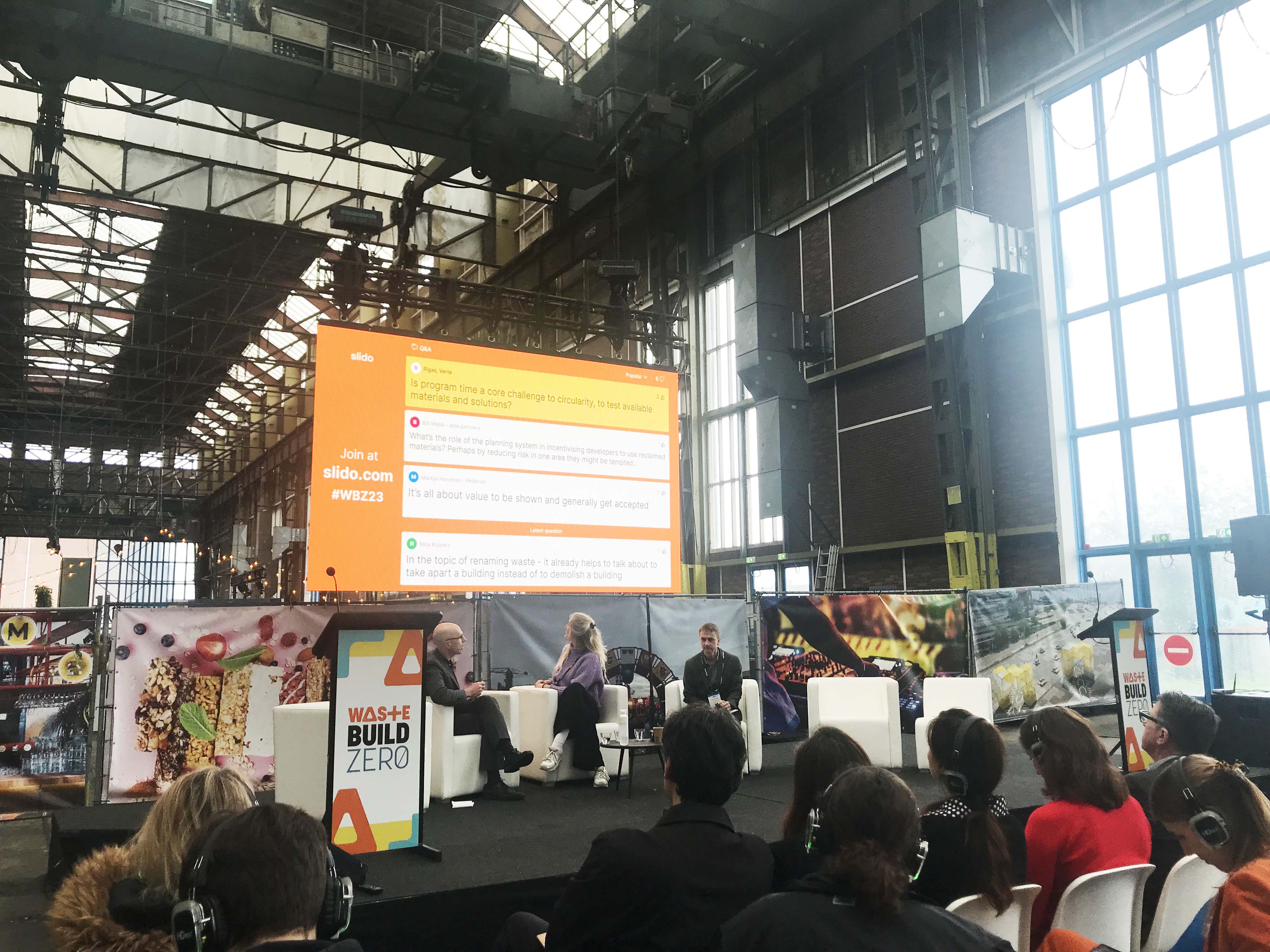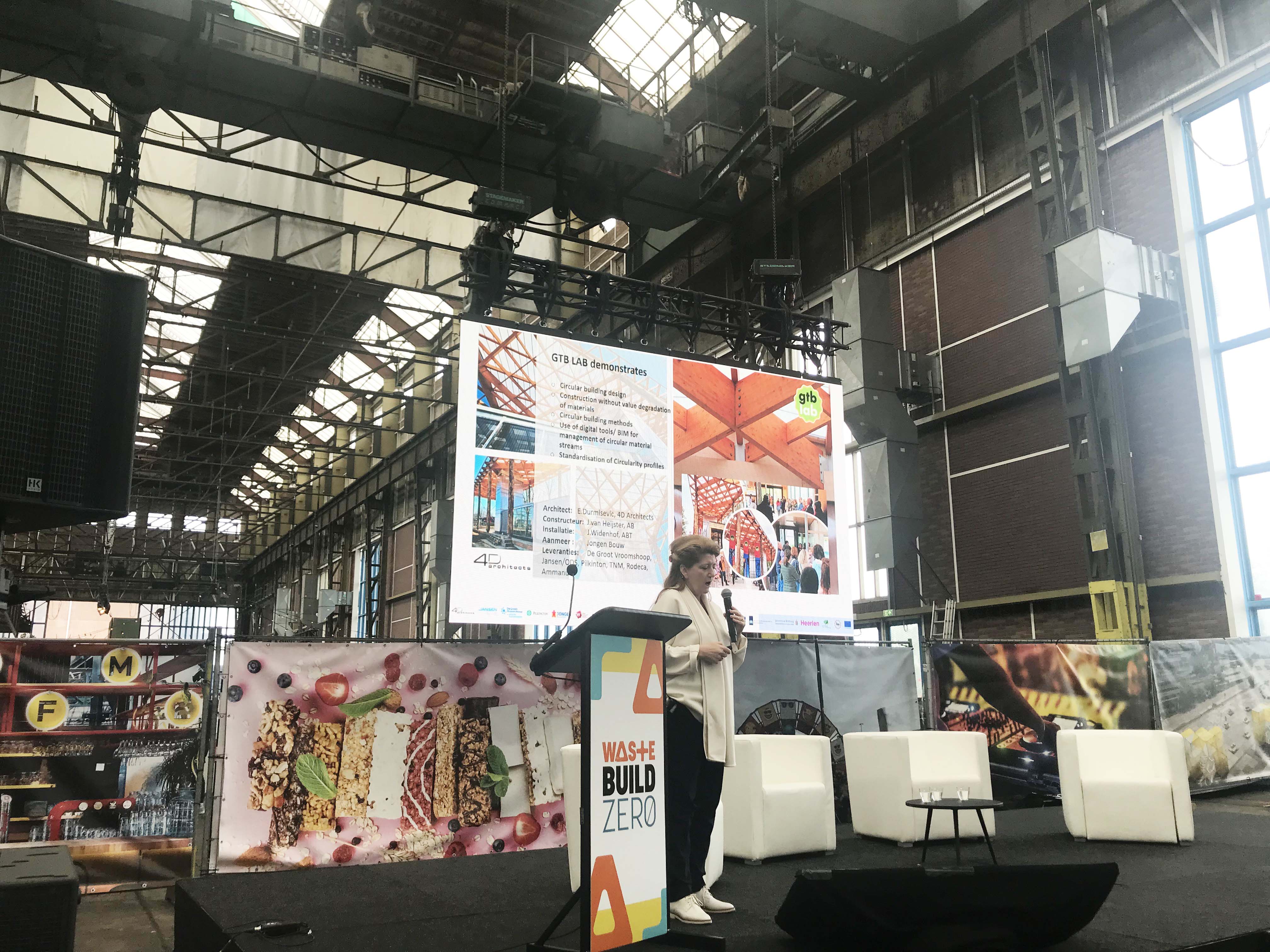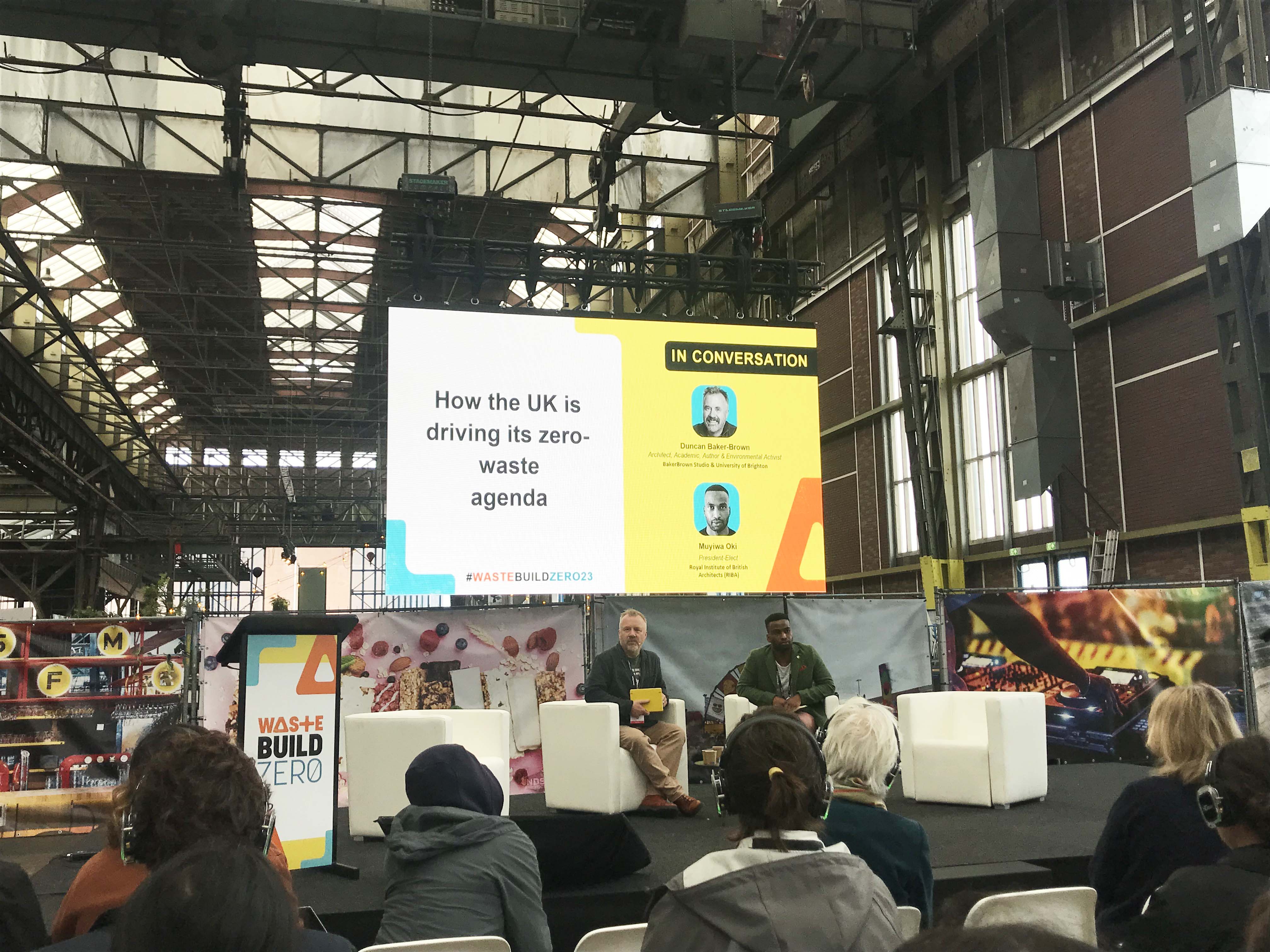WasteBuild Zero conference in Amsterdam
Posted on 18-05-2023
During my current secondment in the Netherlands at TU Delft, I attended the two-day WasteBuild Zero conference at the NSDM in Amsterdam, which pushes circularity in the built environment to the forefront. There was so much to unpack after many great presentations and panel discussions with people passionate about sustainability. Speakers included practicing architects, engineers, deconstruction and demolition experts, sustainability experts, economists, and researchers. Here are some of my key takeaways:
- Defining circularity: There are inconsistent ways to calculate circularity across industries and stakeholder groups, it still needs to be defined with a series of agreed metrics and measures. Embodied carbon on the other hand has clear metrics, but few countries regulate it*.
- Economic incentive: Circular construction and bio-based materials are more expensive; we need to make these solutions more attractive. This can be achieved by shifting taxation from labour to resources. Otherwise, demolition and downcycling are inevitable. In the UK the problem of 20% VAT levy on reuse and refurbishments as opposed to zero on demolition or new-build needs to be fixed.
- A lack of timber industry: For designers to responsibly specify mass timber (which also sequesters carbon) that doesn’t incur excessive embodied carbon in transport, countries other than Austria and Scandinavia need their own local timber industries.
- Early interdisciplinary engagement: Figuring out solutions and identifying opportunities for material reuse early-on makes it more likely to be cheaper. Demolition teams and contractors have a lot of knowledge and should lead in strategies from the get-go. Furthermore, demolition companies should also provide a disassembly team to minimise destruction and increase reuse.
- Flexibility: The design, budget, and scope should have more flexibility and not be fixed to test new methods and products to innovate and challenge the status quo.
- Pre-demolition audits: Documenting all existing materials on-site helps them go back into the supply chain, maximise reuse and know-how, and should inform the design process.
- Waste classification: Bodies such as the Environmental Agency are preventing the reuse of existing materials on-site such as excavated clay to make earth-blocks and tiles - there were several examples of this presented in case studies.
- Procurement: Contractors are not incentivised to incorporate reuse and accept a higher level of risk. Tender documents should also state on the first page the requirement for second-life materials, if it’s on page five it won’t get looked at.
- Warranties: We need more protocols and standardisation to speed up the warranty process, otherwise each material must be tested which takes too long and is too expensive. Risk engineers and insurers should be engaged early on. If possible, try to involve the company that originally produced the material/product.
- Supply chains: There is a huge gap in the supply chain, lots of materials are available but performance criteria and a lack of warranties prevent reuse. The supply chain should provide a breakdown of materials and as-built information, and should be engaged to take materials back and remanufacture them.
- Material passports: These are key at the demolition/disassembly and preparation stage, but there is concern over the level of information needed, it is useful at an element level (products made from few materials) otherwise we could get bogged down with too much data.
It’s tough for construction teams to make sustainable choices when we are living and working in a broken system, where it is currently acceptable to landfill almost absolutely everything and it’s often cheaper and easier to source products from China than to reuse local materials. Architects cannot rely on ‘enlightened clients’ during the continued climate crisis, to quote Hans Hammink from De Architekten Cie, we should rethink the role of the architect as “protector of materials”.
Lastly, the lack of information sharing is holding back more widespread and urgent change, research in industry is usually confidential and money is still the main driver. The transition to a circular economy will require a true sharing economy of both materials and knowledge, and we need to ensure lessons learnt are also looped back into the cycle.
See you next year WasteBuild!
*The Architects Climate Action Network UK are continuing to push forward a bill to regulate embodied carbon: https://www.architectscan.org/embodiedcarbon





